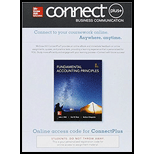
Concept explainers
Periodic Inventory system is an inventory system in which an organization updates the closing inventory balances in general ledger when it conducts physical inventory count. All purchases are recorded in purchase account and when physical counting is done then balance is transferred to inventory account.
There are several methods of calculating the value of inventory in closing stock which are as below:
FIFO method (First In First Out) is the most using method of
LIFO method (Last In First Out) is the method in which the quantity which purchase in last before sale transaction will be sold first. In closing inventory the quantity will be counted from the beginning inventory and purchase thereafter.
Weighted Average method is the most commonly used method after FIFO method. In weighted average the quantity of all purchases and beginning inventory is clubbed and then a weighted average rate is calculated and closing inventory is valued at weighted average rate.
Specific Identification method is the method in which the quantity is specifically identified that from which lot or purchases the closing stock is available and the closing inventory is valued by taking rates and quantities of that specific lot(s) from which closing inventory is available.
Under periodic method only at closing the inventory valuation is done and cost of goods is calculated as below:
Requirement-1
To Calculate:
In the given question we have to calculate the following details under periodic inventory system from the problem 6-3B:
- Cost of goods and quantity available for sale
Requirement-2
To calculate:
We have to calculate units in closing stock at month end.
Requirement-3:
To calculate:
We have to calculate cost of closing inventory using FIFO, LIFO, Weighted Average and Specific Identification method under periodic inventory system.
Requirement-4
To calculate:
We have to calculate gross profit under FIFO, LIFO, Weighted Average and Specific Identification method under periodic inventory system
Requirement-5:
To determine:
We have to determine that manager will prefer valuation method as it earns on percentage of gross profit.
Want to see the full answer?
Check out a sample textbook solution
Chapter 6 Solutions
Connect 2-Semester Access Card for Fundamental Accounting Principles
- Please provide the answer to this general accounting question with proper steps.arrow_forwardBeta Manufacturing purchased equipment for $86,000 with an estimated salvage value of $6,000 and a useful life of 8 years. What is the annual depreciation expense using the straight-line method? HELParrow_forwardCan you help me find the accurate solution to this financial accounting problem using valid principles?arrow_forward
- For 2024, Somerset Engineering reported beginning total assets of $1,260,000 and ending total assets of $1,380,000. Its net income for this period was $525,000, and its net sales were $3,120,000.arrow_forwardNonearrow_forwardHow much net operating income will be reported for the period?arrow_forward
- Please explain the correct approach for solving this financial accounting question.arrow_forwardWhat was the amount of net income for the year?arrow_forwardAcme Corporation purchases machinery for $78,000 with a salvage value of $8,000 and an expected useful life of 7 years. What is the annual depreciation expense using the straight-line method?arrow_forward

 AccountingAccountingISBN:9781337272094Author:WARREN, Carl S., Reeve, James M., Duchac, Jonathan E.Publisher:Cengage Learning,
AccountingAccountingISBN:9781337272094Author:WARREN, Carl S., Reeve, James M., Duchac, Jonathan E.Publisher:Cengage Learning, Accounting Information SystemsAccountingISBN:9781337619202Author:Hall, James A.Publisher:Cengage Learning,
Accounting Information SystemsAccountingISBN:9781337619202Author:Hall, James A.Publisher:Cengage Learning, Horngren's Cost Accounting: A Managerial Emphasis...AccountingISBN:9780134475585Author:Srikant M. Datar, Madhav V. RajanPublisher:PEARSON
Horngren's Cost Accounting: A Managerial Emphasis...AccountingISBN:9780134475585Author:Srikant M. Datar, Madhav V. RajanPublisher:PEARSON Intermediate AccountingAccountingISBN:9781259722660Author:J. David Spiceland, Mark W. Nelson, Wayne M ThomasPublisher:McGraw-Hill Education
Intermediate AccountingAccountingISBN:9781259722660Author:J. David Spiceland, Mark W. Nelson, Wayne M ThomasPublisher:McGraw-Hill Education Financial and Managerial AccountingAccountingISBN:9781259726705Author:John J Wild, Ken W. Shaw, Barbara Chiappetta Fundamental Accounting PrinciplesPublisher:McGraw-Hill Education
Financial and Managerial AccountingAccountingISBN:9781259726705Author:John J Wild, Ken W. Shaw, Barbara Chiappetta Fundamental Accounting PrinciplesPublisher:McGraw-Hill Education





